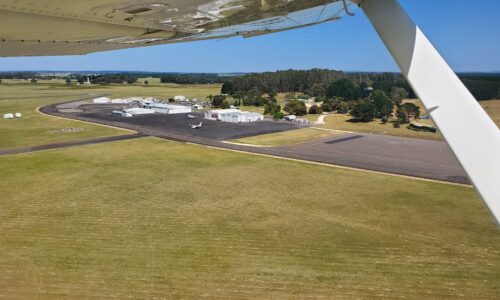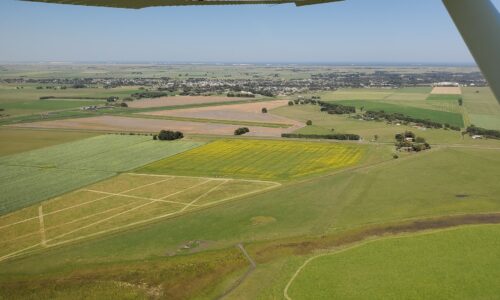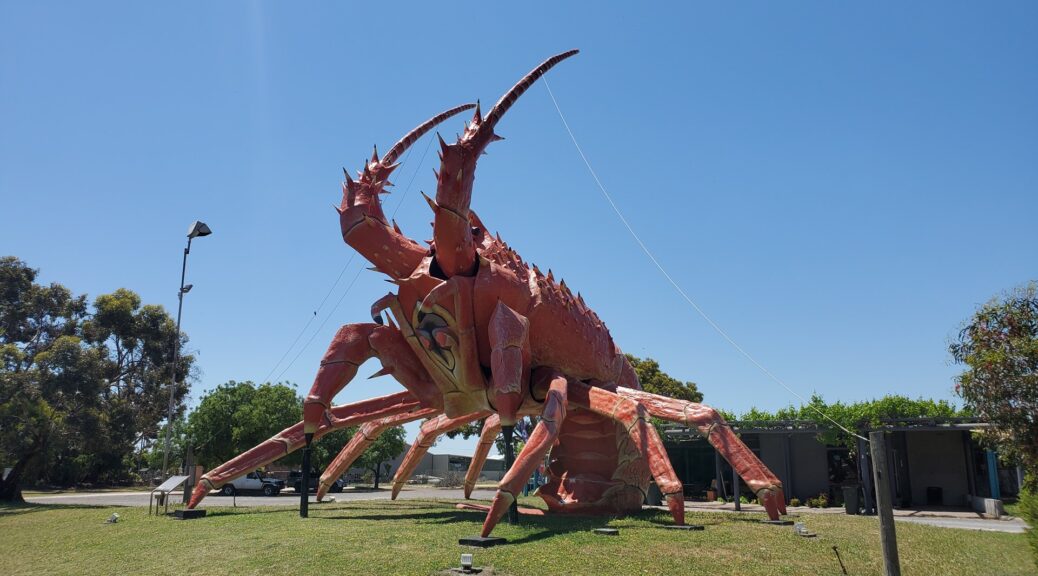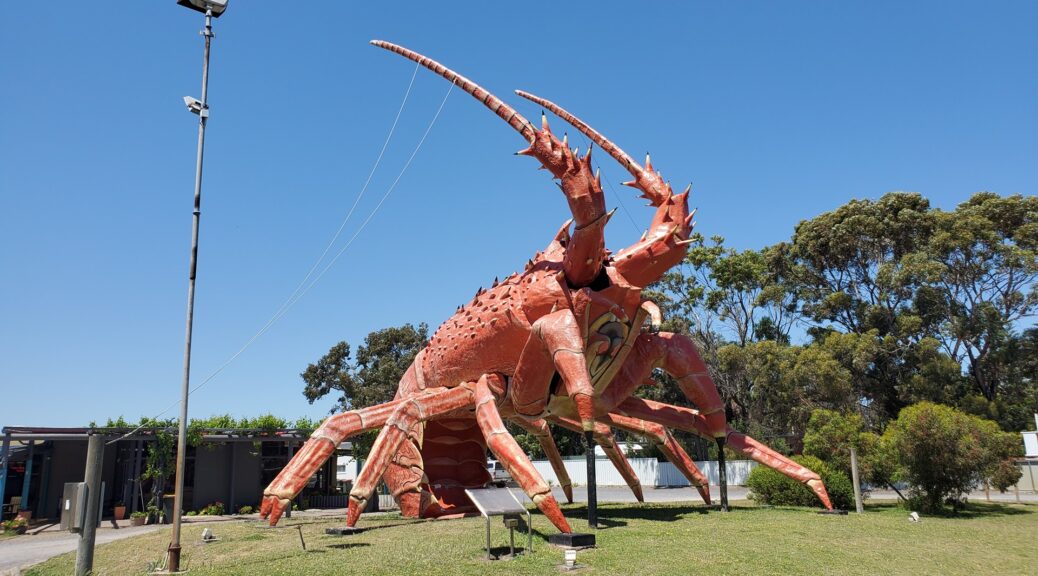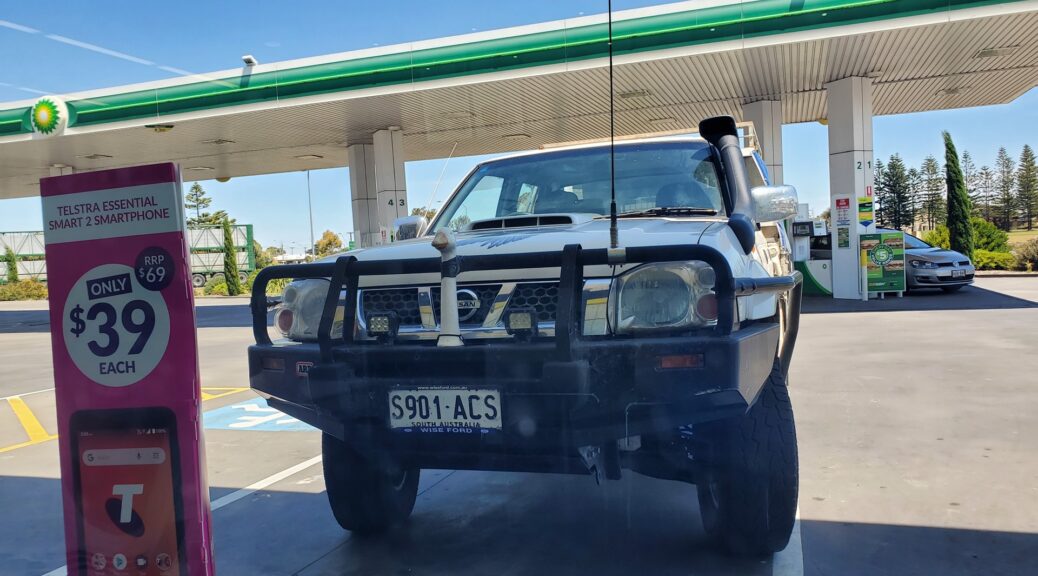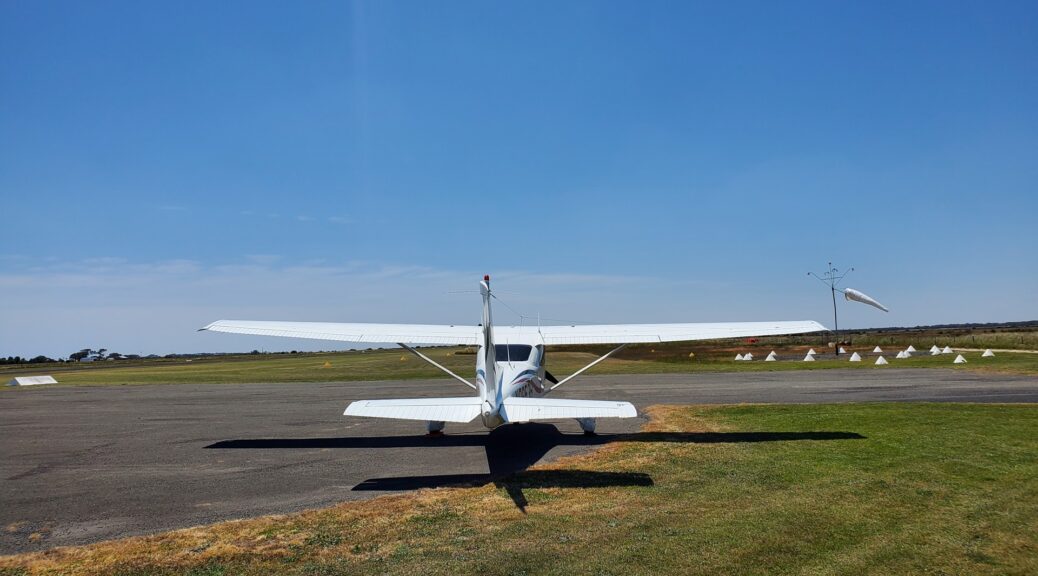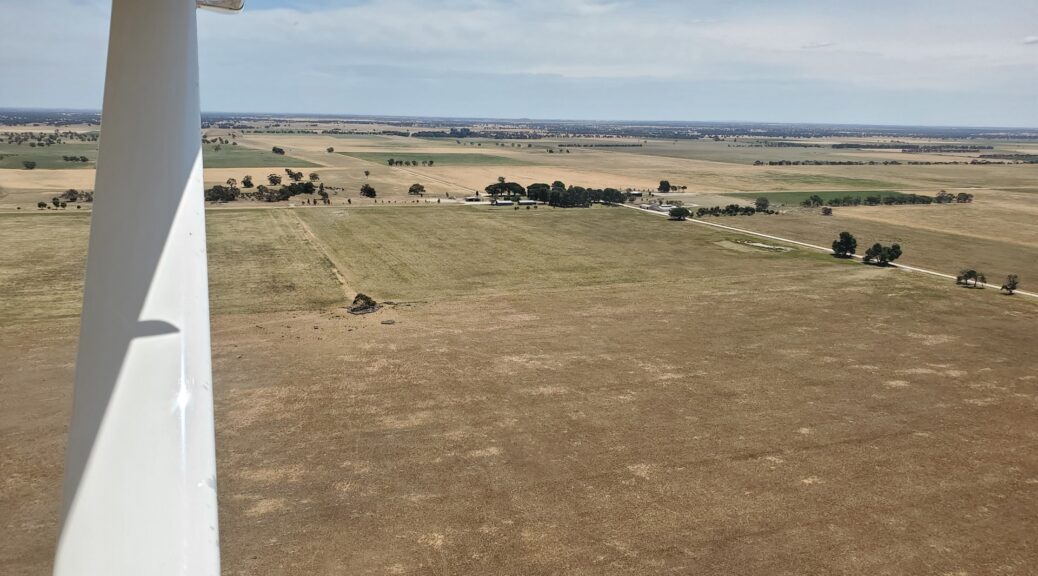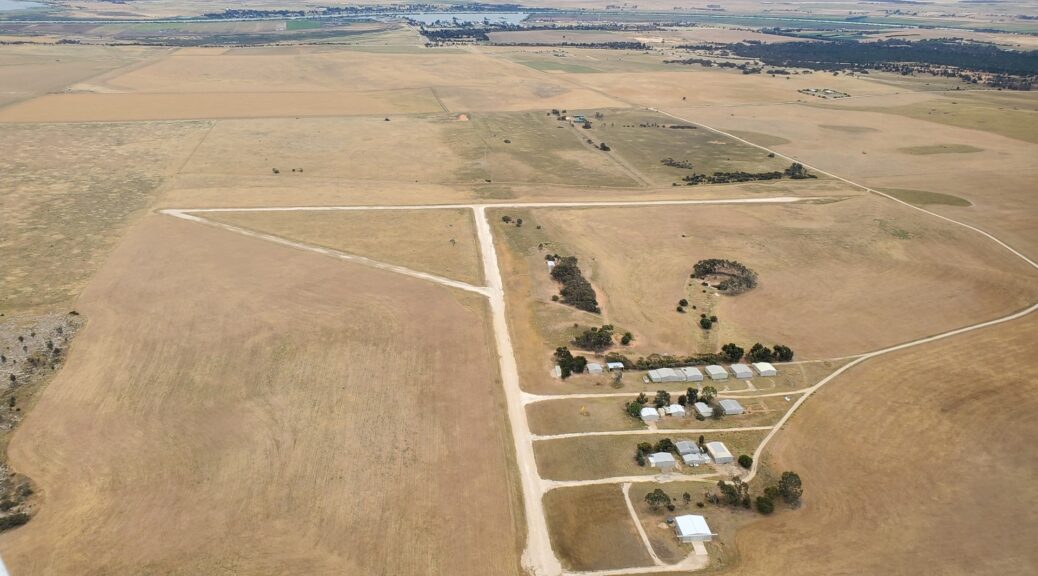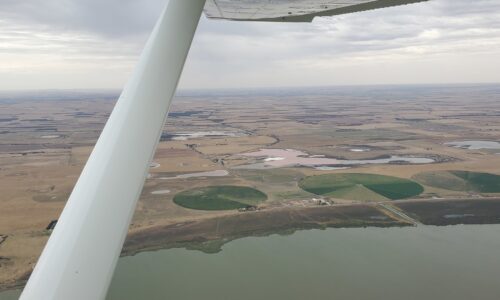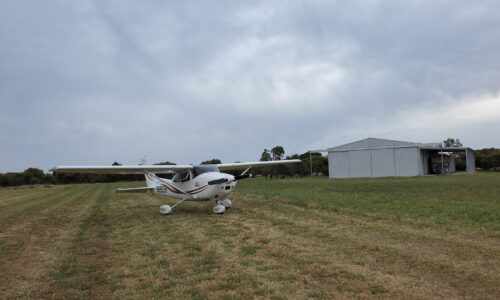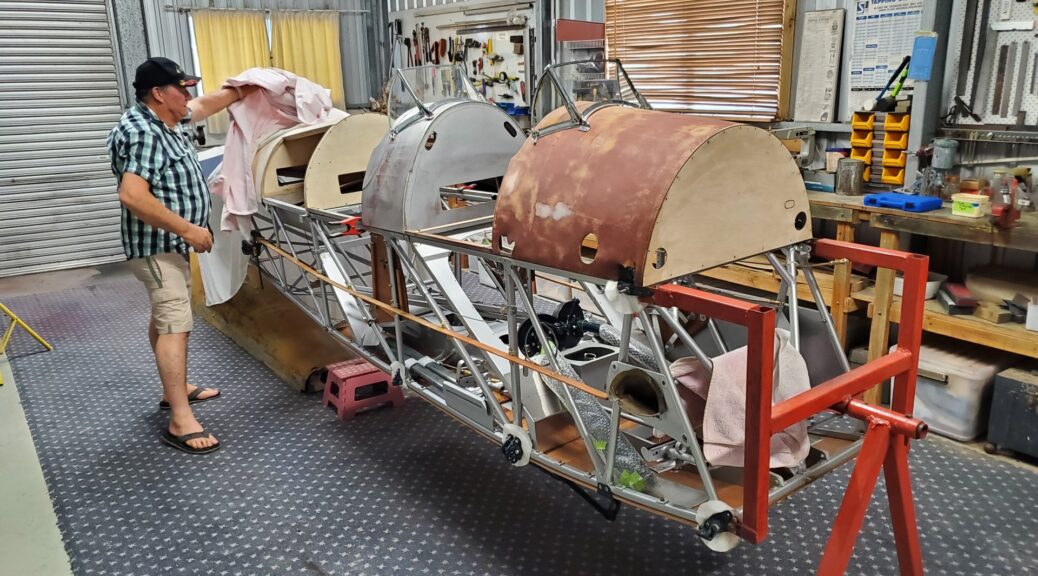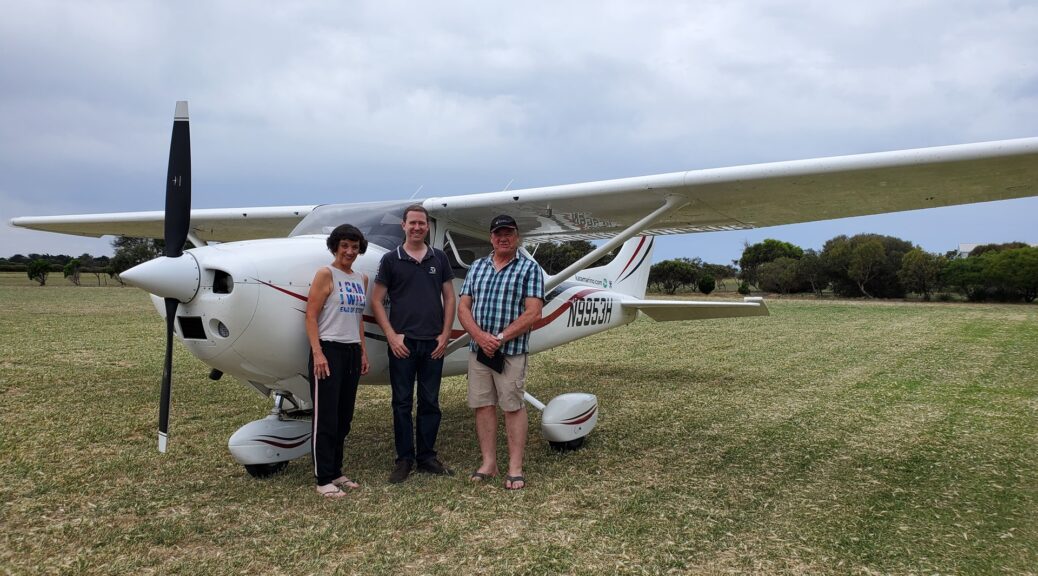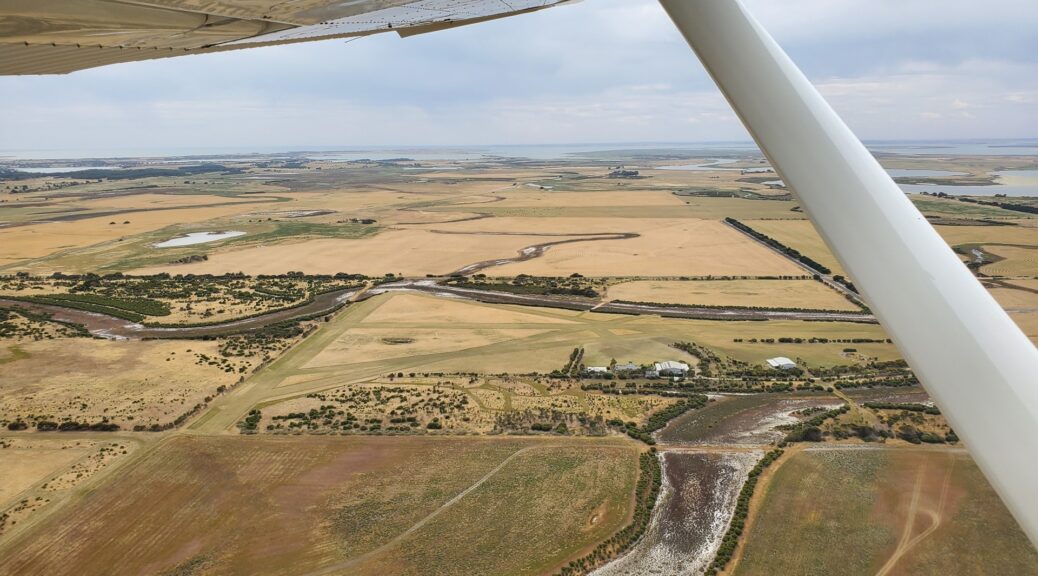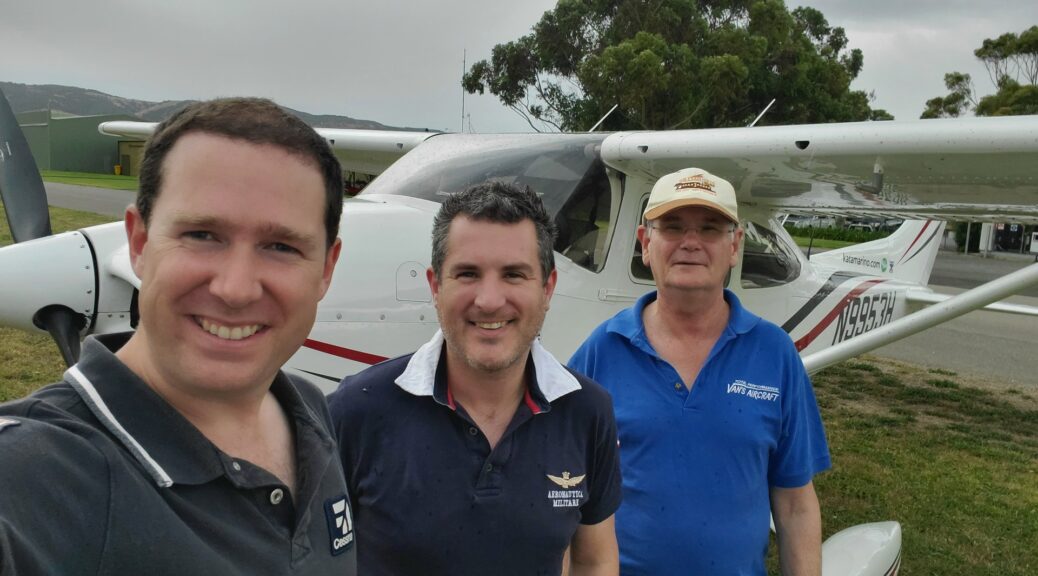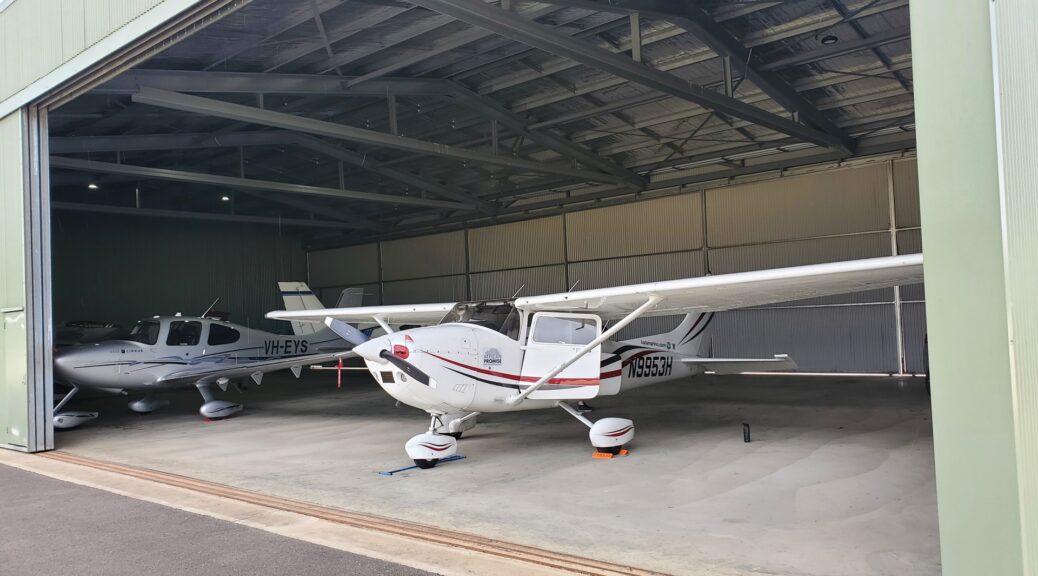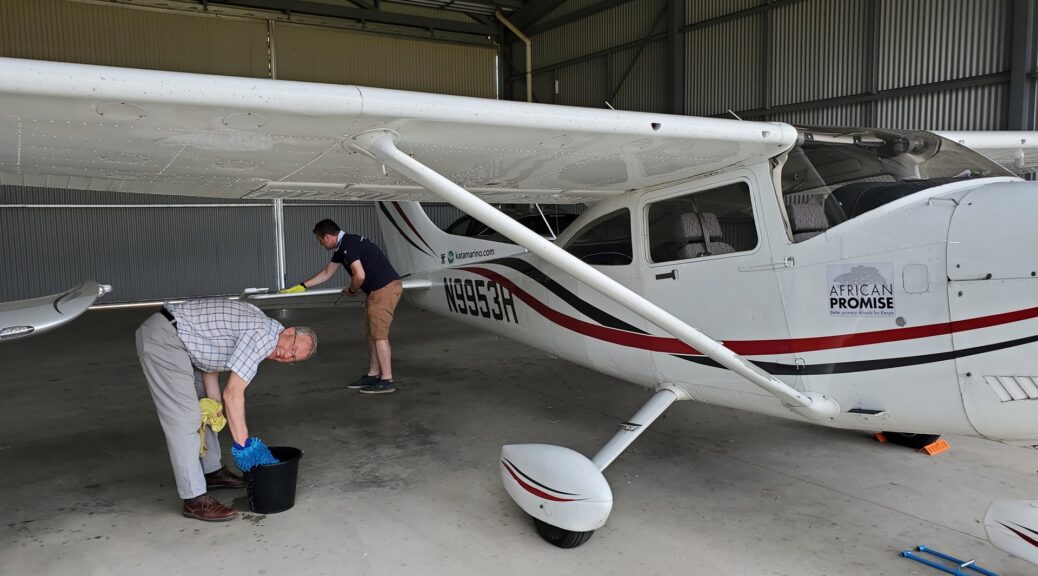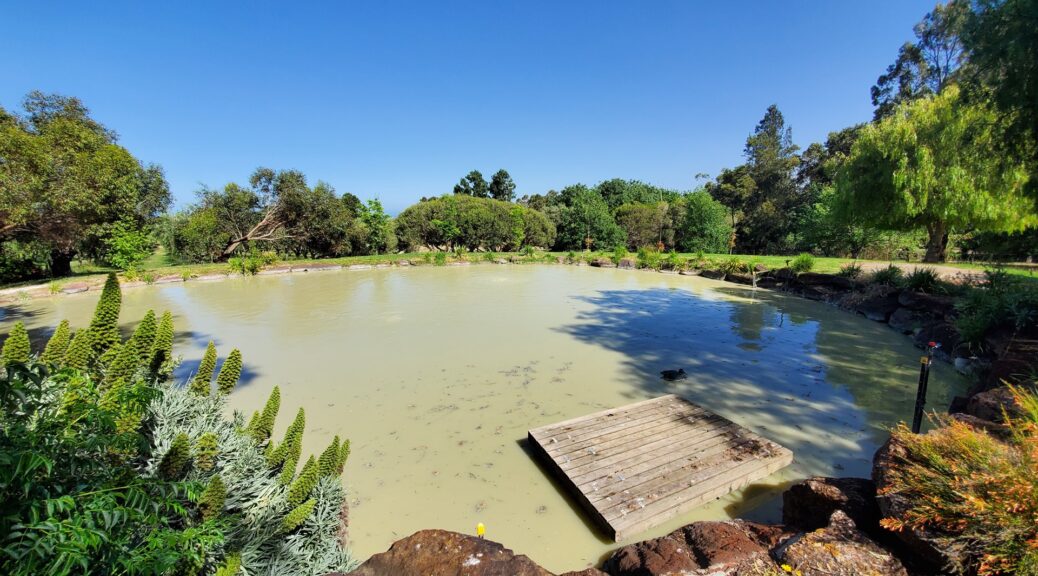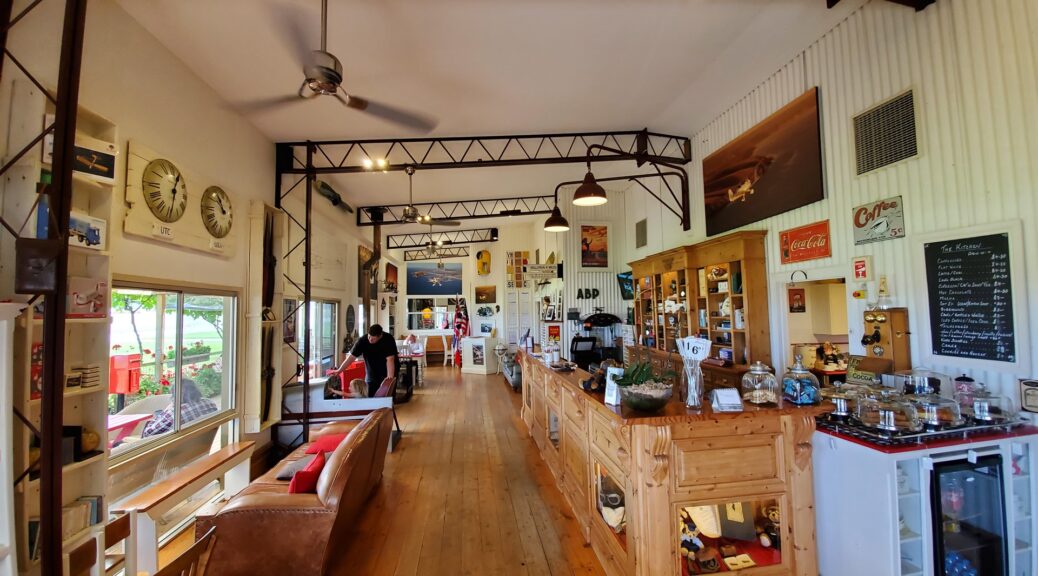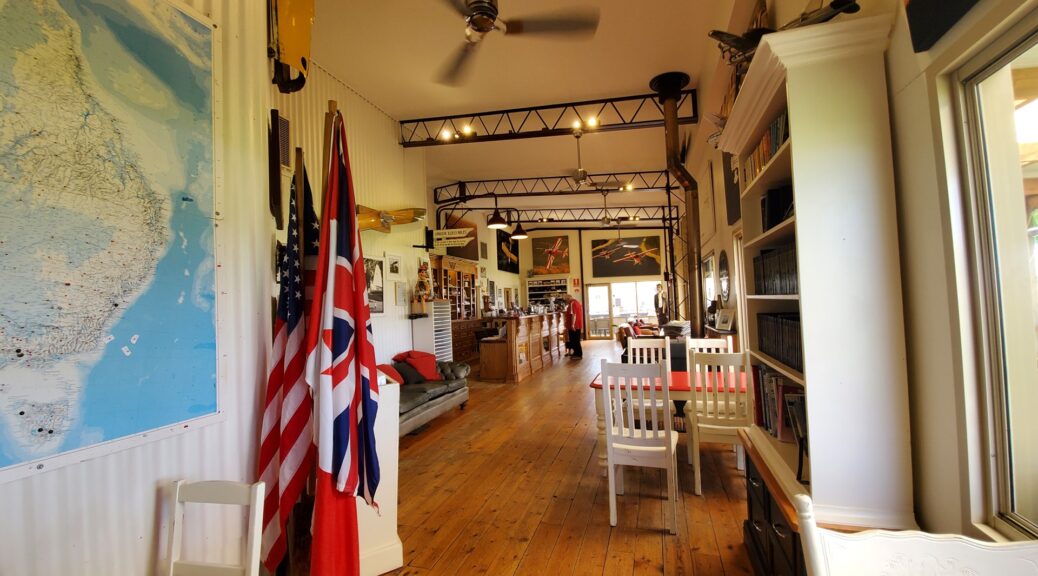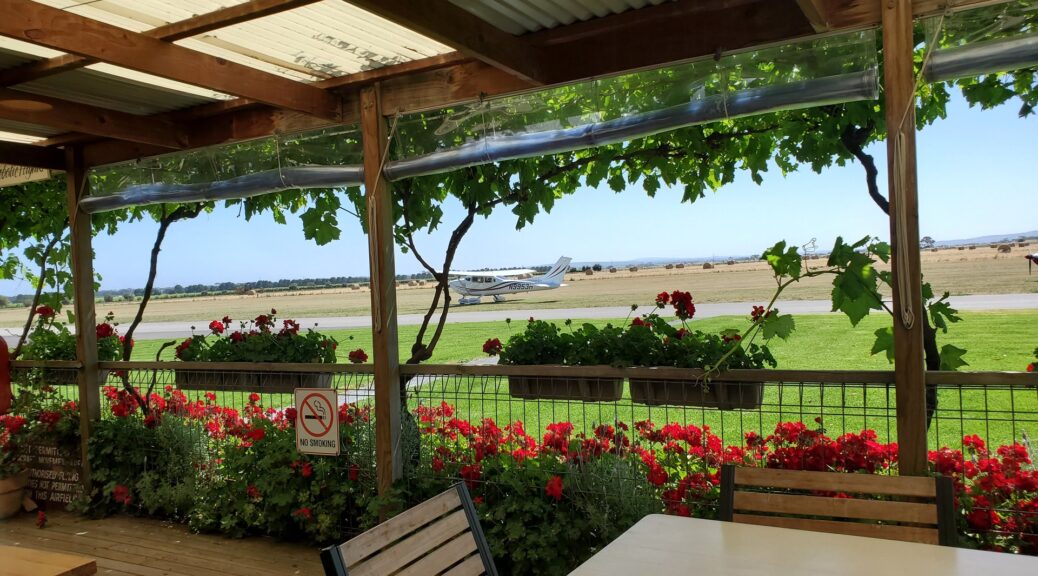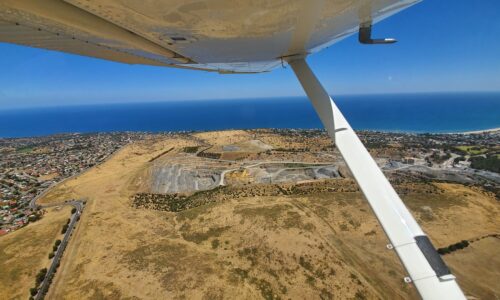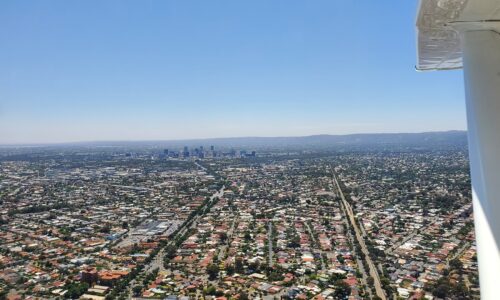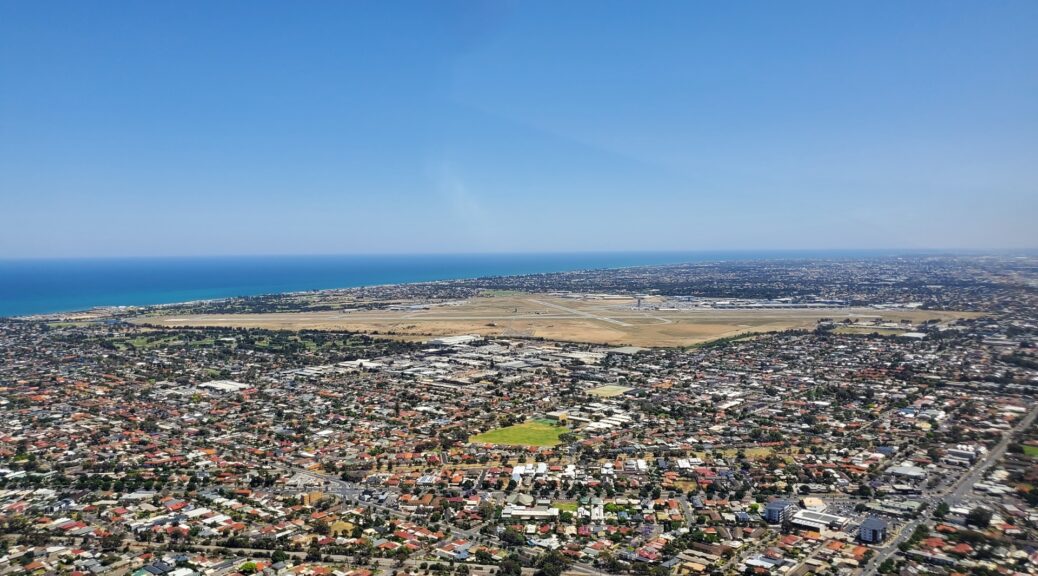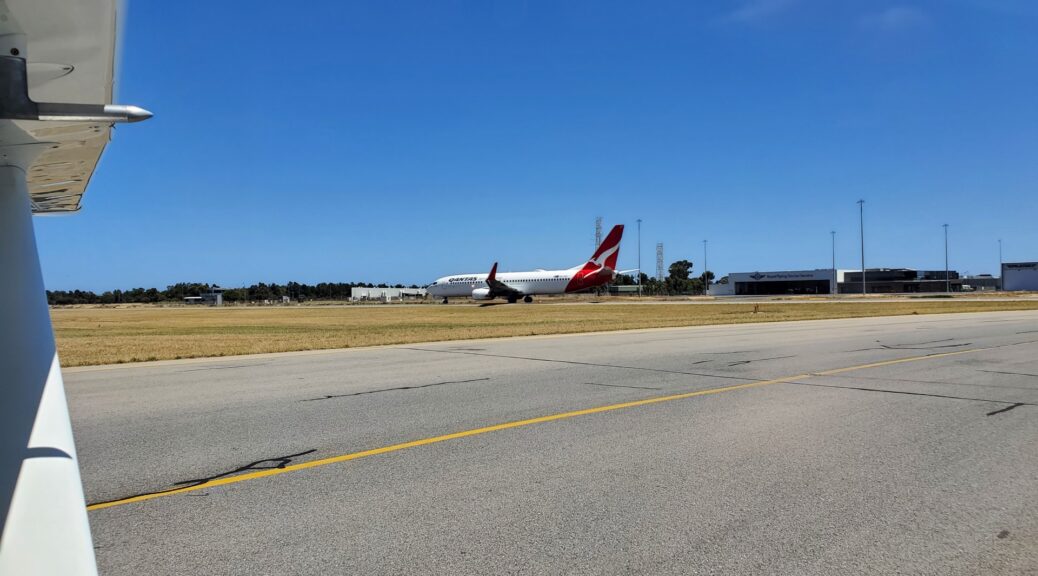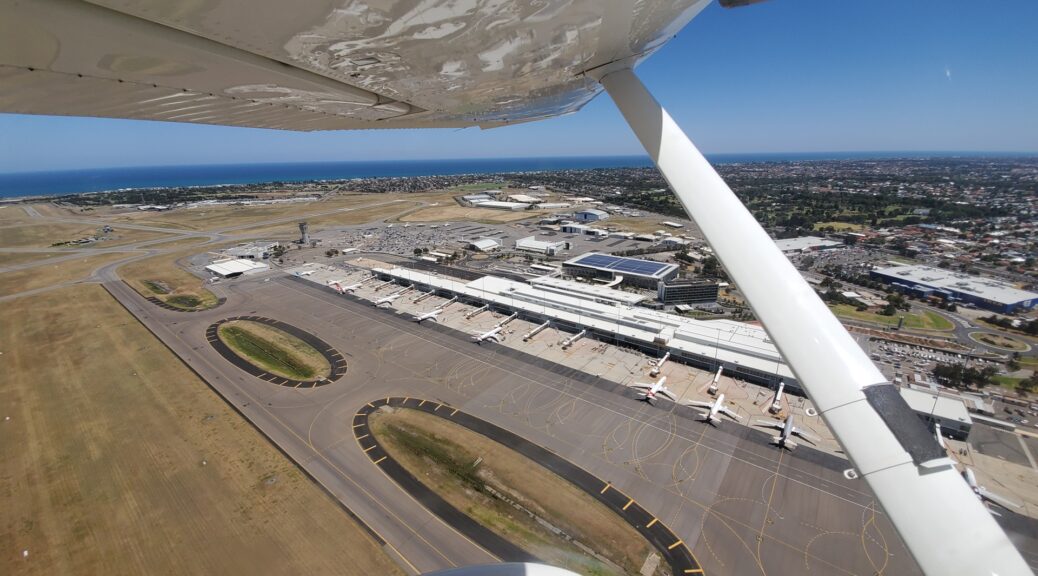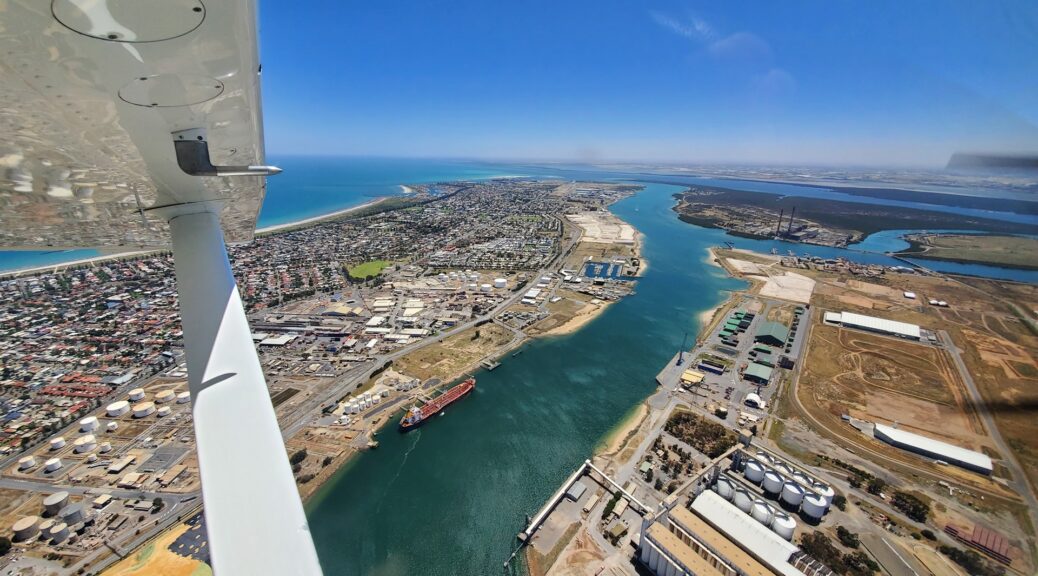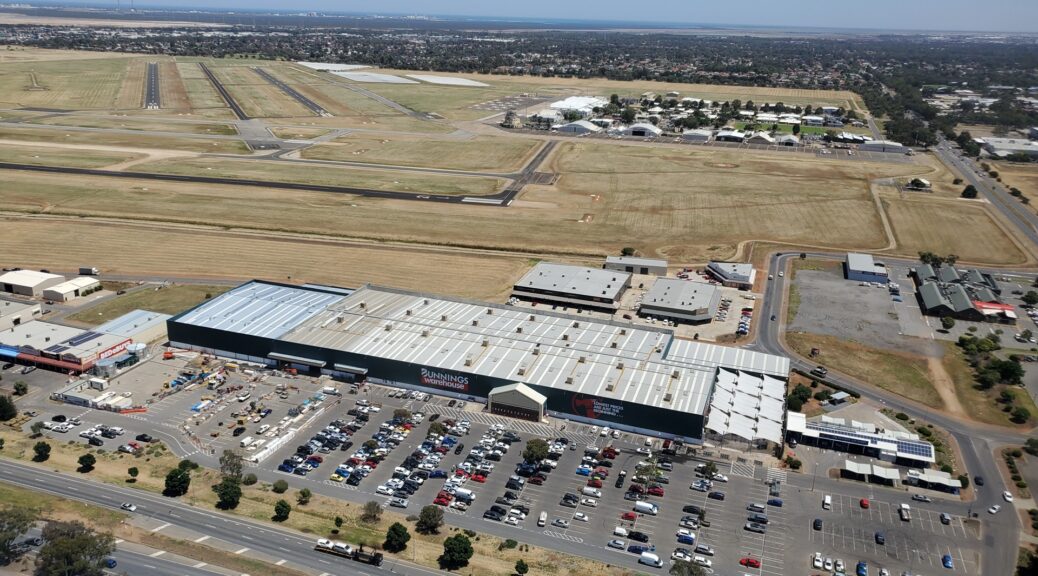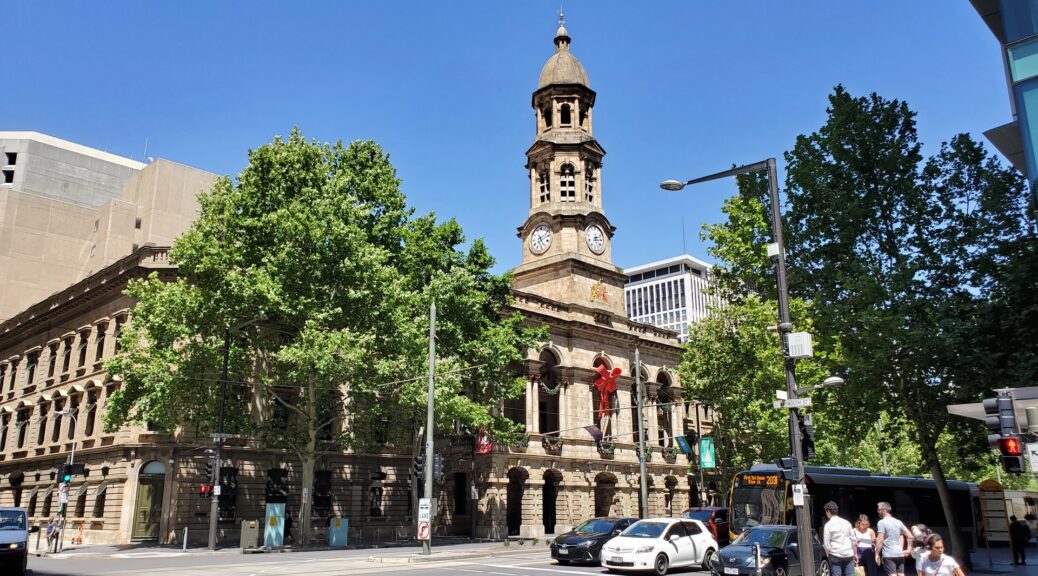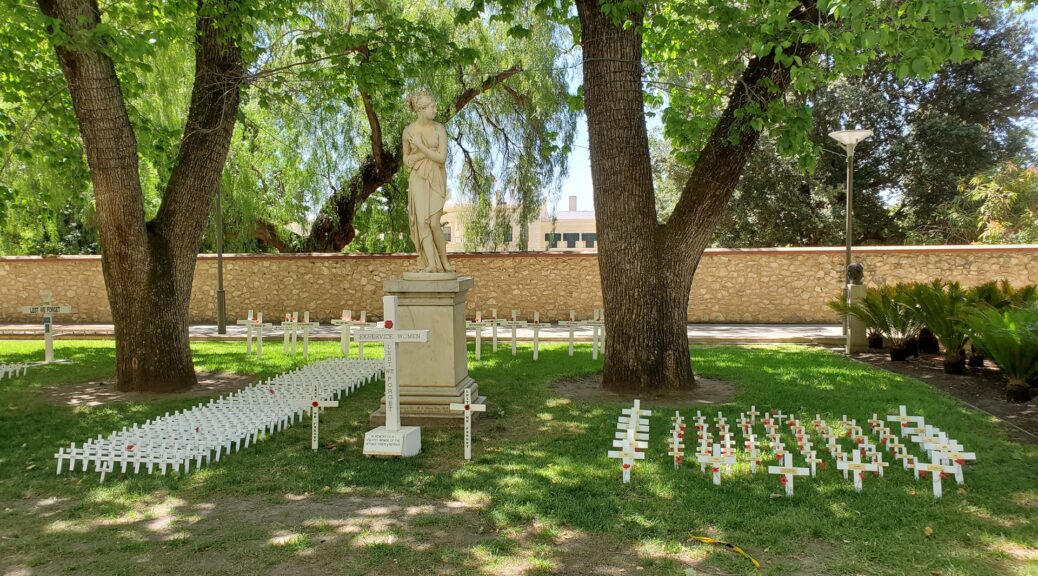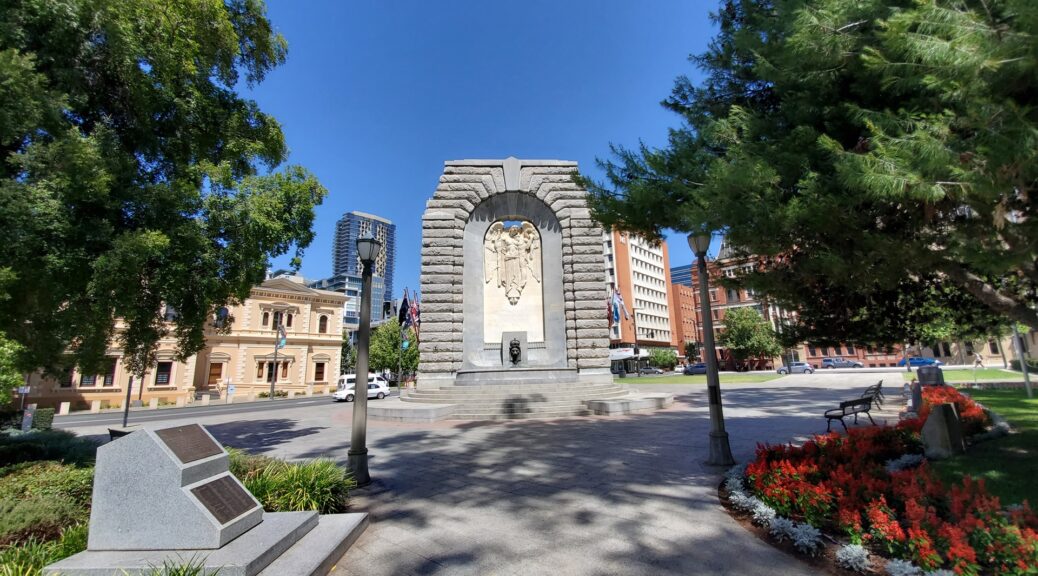Round the World – Australia 2, Part 3
In the morning I packed up my bags, and walked up the hill a little way to the local supermarket; I needed some snacks for the cockpit, and some more batteries for my noise cancelling headset! The taxi picked me up from there and dropped me back at the airport, where I used the code lock to let myself through the gate (the code is usually displayed somewhere so you can see it as you exit, and get back in).
It was another stunning day, just right for exploring some of the little airports along the coast of South Australia. Having fueled up the night before, all that remained to be carried out was the pre-flight inspection and soon my wheels left the tarmac and I climbed out northwest, on my way to the first stop of the day.
This first stop was Millicent, and it was just a short one before I was off again on my way to the coast. The next airport on my flight plan was the grass strip at Robe. I shut down here and stretched my legs, but there was nobody around. After enjoying a snack, lazing on the grass under the wing, I was on my way once again.
My subsequent flight was an even shorter one, along the coast to the town of Kingston. As I turned onto final approach, I couldn’t help but notice an 18m (59ft) tall lobster off to the left. It caught the eye. As soon as I had taxied in and parked, I picked up my phone and started looking for a little information about this imposing crustacean.
It turned out to be “The Big Lobster” (locally known as Larry the Lobster). As I read, a memory came back to me; Australians, for some reason, love “Big things”. All around Australia one can find such interesting tourist attractions as The Big Ram, The Big Orange, The Big Pineapple, and so on. Typically once a town decides to take the plunge into hosting a “Big Thing” they try to select one which has some local significance; in this case, Kingston is known for lobster fishing.
It was only a 15 minute walk to the lobster, which was a tourist opportunity I couldn’t pass up. It was almost noon, but the famous saying about “mad dogs and Englishmen” didn’t come to mind until it was a little too late. It was a pretty scorching walk, but I have to say that Larry was well worth it. A few photographs just about exhausted the entertainment options however so I headed back to the aircraft, stopping at the “servo” (petrol station) for a drink and an ice-cream along the way. I took off and headed north, ready to visit a few more strips through the early afternoon.
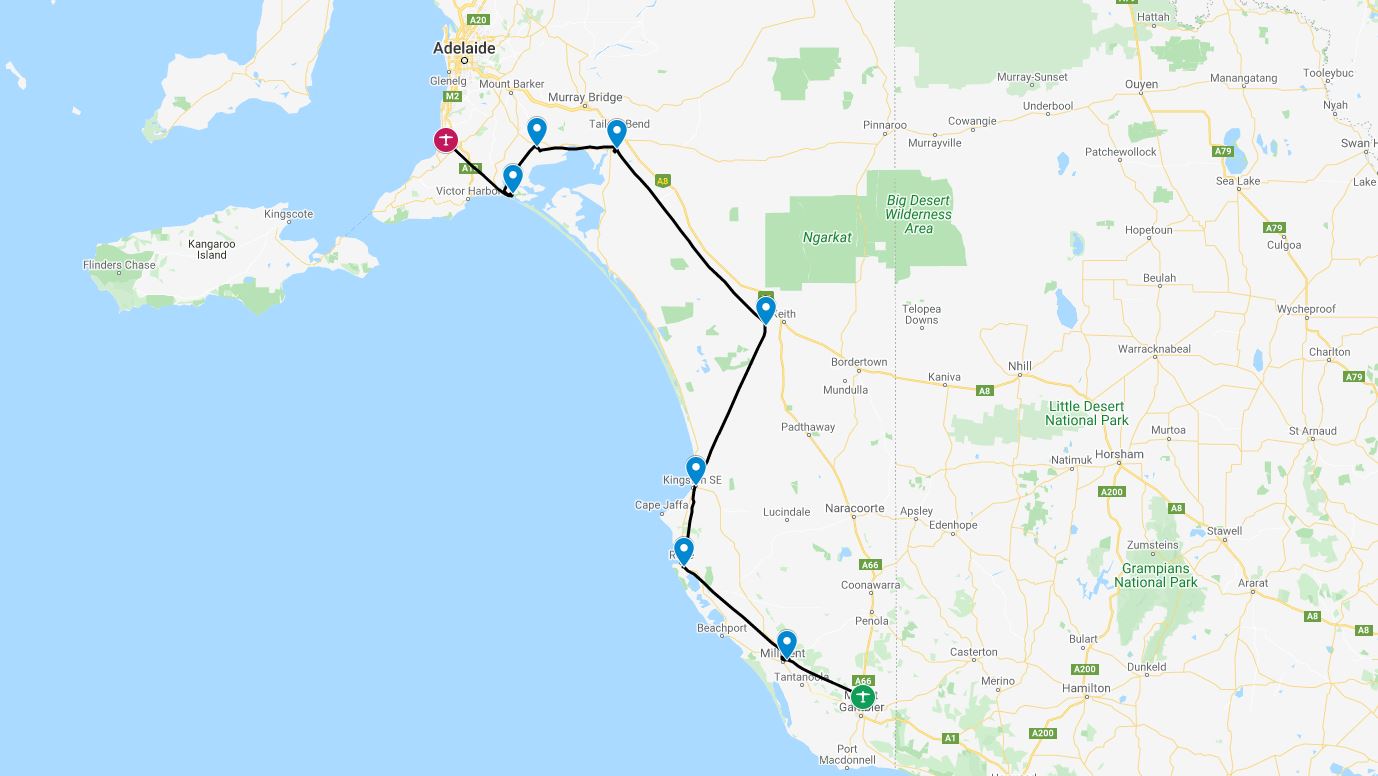
I flew inland from Kingston, performing a touch and go at the airfield of Keith (because it seemed like a funny name for an airport) before turning northwest and making my way to Brooklands Air Park. Their entry in the ERSA (Australia’s official flight guide) was very welcoming, inviting anyone to drop in, and I was happy to take advantage of this. Once again, being a Monday afternoon meant that the strip was deserted, so it didn’t take long before I taxied back and made my way west back towards the coast, along the shores of Lake Alexandrina.
I made a brief stop at the airport of Strathalbyn, before continuing southwest along the lake towards Hindmarsh Island. A friend in an Australian pilot’s group online had suggested dropping in to a private grass strip on this island, playfully known as Hindmarsh International. It took a few minutes to properly identify the field, as I first came across a tarmac strip a little north of it, but soon I was on downwind to check out the runway conditions before coming in to land, and parking outside the house. One of the owners, and their two lovely dogs, came out to greet me.
She invited me into the little clubroom adjoining one of the hangars, and offered a drink. Her husband was on his way home too, and soon joined us. They told me all about the little Tiger Moth operation they had going on, flying and restoring a number of these historic little training aircraft, and gave a tour through the hangar. I had a great time hanging out with them and their lovely dogs before continuing to what would end up being my final stop of the day.
Almost all the Australians that I had spoken to had told me I really must stop at the airport of Aldinga, and I saw no reason not to follow their advice. This airfield was founded relatively recently, in 1976, by a group of private pilots. It has now grown into a fair sized regional airport, home to over 50 hangars inhabited by private owners as well as businesses such as Adelaide Biplanes. I had been in touch with a local pilot who was waiting to meet me; as well as my friend Peter from New Zealand, who had just arrived to visit family in Adelaide and came down to say hello! After a very scenic flight across the Fleurieu Peninsula I descended to Aldinga and taxied in to a surprisingly large welcome group.
The group was anchored around Hani, a local pilot (and expat Brit) who I had been corresponding with. It was a little late in the day and our plan to have a meal in the airport café was hampered by its closure, so we came up with a new plan; stay overnight, and have dinner! After chats and cups of tea at the flying school, Hani gave me some good news; he had arranged to park Planey in the club hangar overnight, and had organised a room in a local B&B for me whose owners were good friends of his. Talk about good service!
I taxied Planey around to the hangar, with Hani’s friend and club president Ron in the passenger seat. Hani met us there, and we pushed Planey inside. I was busily organising the cabin and preparing my overnight bag when I noticed that Hani and Ron had grabbed buckets and sponges and were giving Planey a wash! This was unusually good service, and I was very grateful for the assistance. Hani dropped me at the beautiful farmhouse B&B to relax for an hour or so, before picking me up again and driving me for dinner with a friend of his. In true Australian style we had a top class pub meal with plenty of quality wine and beer. I like Aldinga!
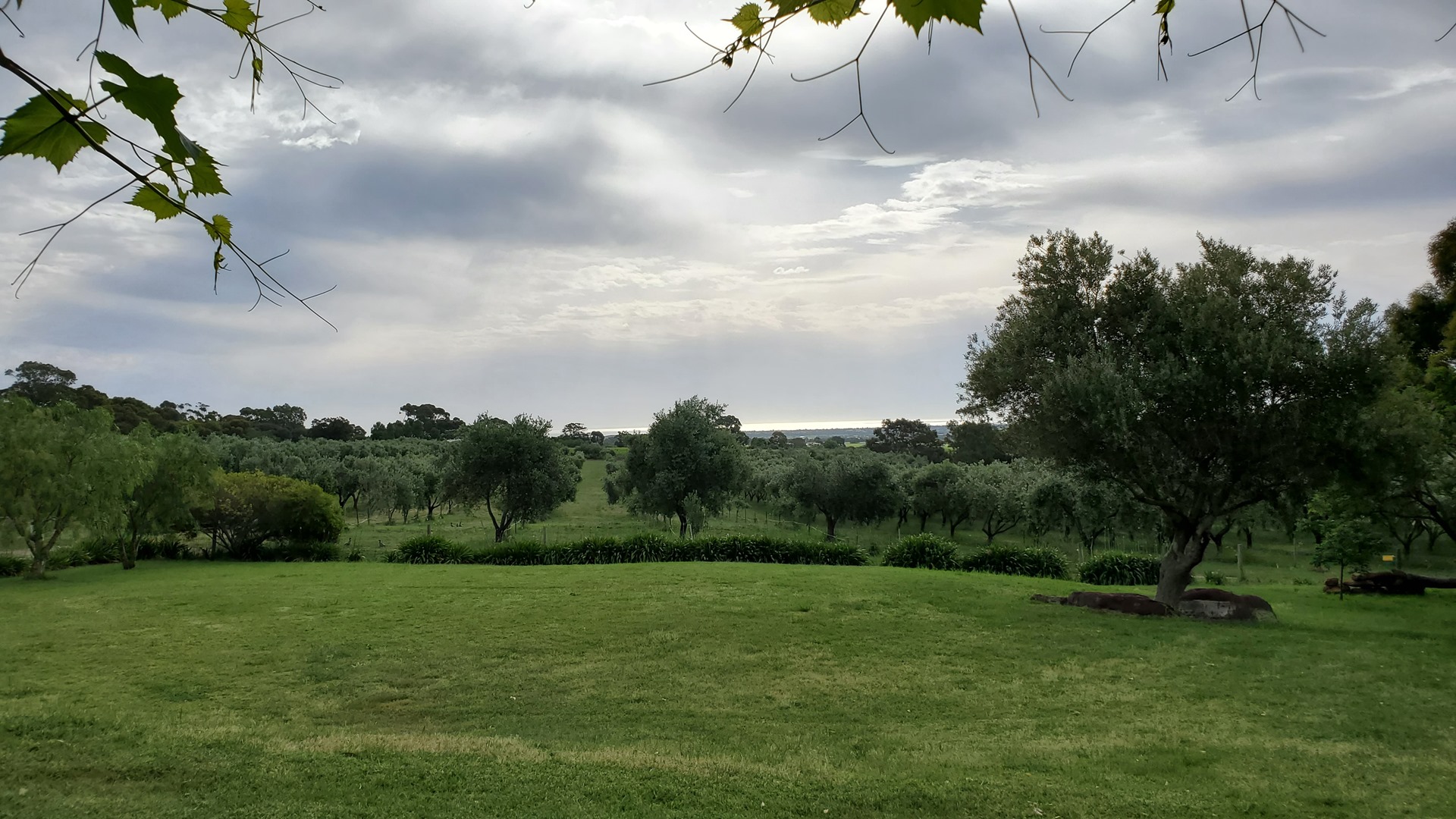
Hani was working the next morning, but Ron’s wife kindly collected me and took me back to the airport. The day’s flying would be limited; up the coast to the main general aviation airport in Adelaide, known as Parafield. My flight would take me past the main Adelaide International airport though, so I decided I’d like to stop in for a landing. I phoned up air traffic control at Adelaide before departure to check that this would be ok, and they confirmed that with the reduction of air traffic resulting from the pandemic, they were keen for visitors.
After a lovely breakfast in the café at Adelaide Biplanes, I taxied out behind a couple of training aircraft and took off to the north. I called up Adelaide as soon as I was airborne, continuing to monitor the local traffic frequency on my second radio, and was given my clearance; “fly north a bit, and then fly in circles until I’m ready for you”.
It seems that I had managed to clash with the only commercial aircraft movement that hour. Circling over the south of Adelaide admiring the beaches was not unpleasant, and it wasn’t long before I was cleared into their airspace and given landing instructions. I just wanted to do a landing and taxi back for immediate departure, which was fine with tower; but they ended up holding me on the ground for 20 minutes while coordinating clearances. Not to worry!
Eventually, I was able to line up and depart. Tower gave me a slight left turn to proceed up the coast, out of their airspace and into that of Parafield. My routing took me up north along the coast, first over golden beaches and expensive coastal houses and then into Adelaide’s port area.
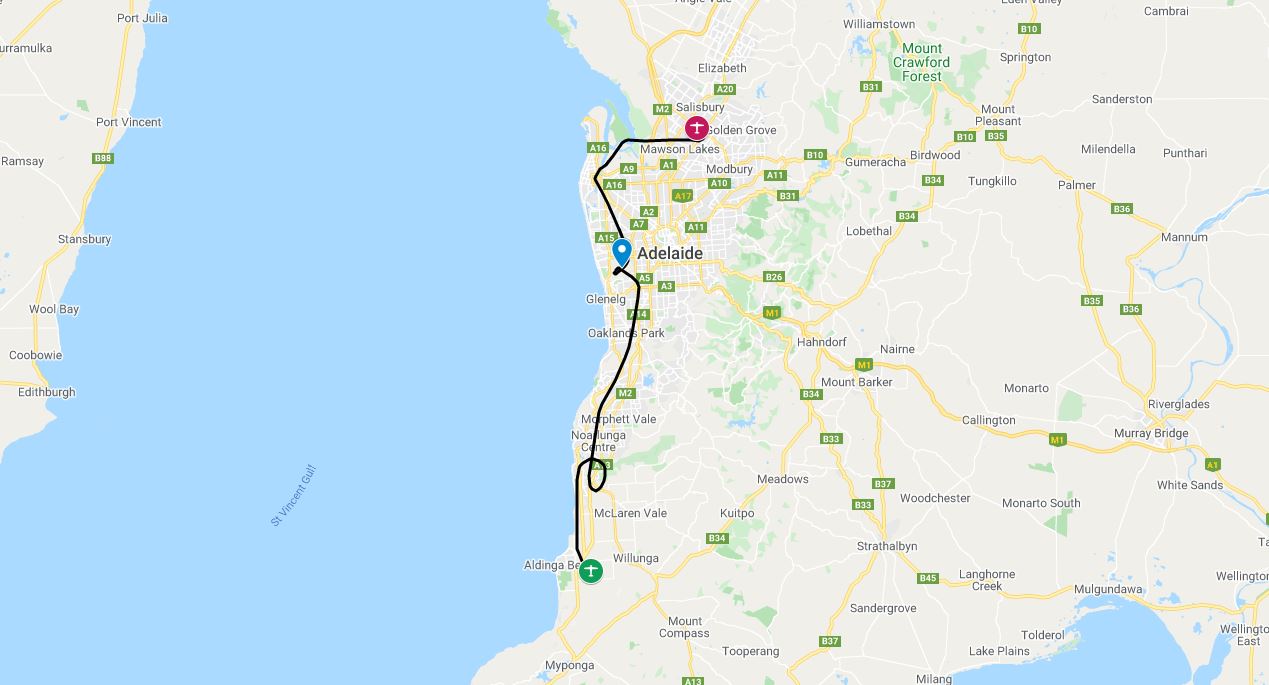
From Port Adelaide I was cleared inbound, and discovered that if one is not careful it’s very easy to mistake the Airforce base at RAAF Base Edinburgh with Parafield if you’ve not been in there before. This confusion was quickly cleared up, and I was soon on a left downwind to land at the correct airfield. I called for the fueler on arrival, to ensure minimal delays in departing the following day.
Before long, I was in an Uber headed into Adelaide city center. I dropped off my bags in my room at the YHA, and headed out to explore the city. Christmas was approaching and decorations were everywhere, along with a lot of very organised people doing their Christmas shopping now, rather than leaving it until the last moment. I walked into the center of town, headed north through the Rundle Mall, and stopped to view the Adelaide War Memorial before making my way to the South Australian Museum.
The South Australian Museum was founded in 1856. As well as a Natural History section, it holds the largest collection of Aboriginal artifacts in the world, more than 30,000 individual pieces. With five floors of exhibits, a few hours was barely enough to scratch the surface of what the museum has to offer. Before I knew it they were announcing that closing time was imminent, and I made my way to the exit.
I made the most of the afternoon sun with a short walk around the city center, finishing off with a Japanese meal which turned out to be in a restaurant at the base of a quarantine hotel. While I ate, I watched a bus turn up and disgorge a group of gloved and masked individuals, clearly a new intake fresh from the airport. “Good to see that they’ve got everything well under control”, I thought.
After dinner I wandered back to the hotel, stopping for an excellent waffle along the way. It was a warm evening and people were out enjoying the fresh air, carrying on life as normal with not a mask in sight. Paradise! What I didn’t know was that at that very moment, COVID was in the community and busily spreading through a large Adelaide family, one of whom worked in a quarantine hotel.
Click here to read the next part of the story.

